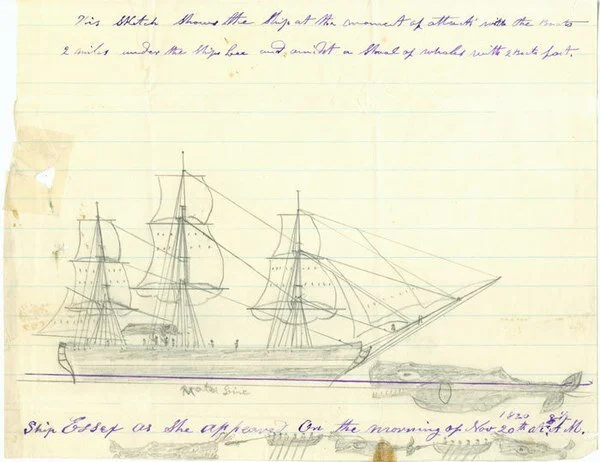
What can be endured?
Sperm whale striking The Essex on Nov. 20, 1820 (sketched by Thomas Nickerson)
“There is no knowing what a stretch of pain and misery the human mind is capable of contemplating when it is wrought upon by the anxieties of preservation; nor what pangs and weaknesses the body is able to endure, until they are visited upon it; and when at last deliverance comes, when the dream of hope is realized, unspeakable gratitude takes possession of the soul, and tears of joy choke the utterance.’’
-- Owen Chase, sailor, in Narrative of the Most Extraordinary and Distressing Shipwreck of the Whale-Ship Essex, of Nantucket
Here’s an edited version of a good Wikipedia summary of the background of this horror story:
“The Essex was a whaler from Nantucket launched in 1799. In 1820, while in the Pacific Ocean under the command of Capt. George Pollard Jr., she was attacked and sunk by a sperm whale. Thousands of miles from the coast of South America with little food and water, the 20-man crew was forced to try to make for land in the ship's surviving whaleboats.
“The men suffered severe dehydration, starvation, and exposure on the open ocean, and the survivors eventually resorted to eating the bodies of the crewmen who had died. When that proved insufficient, members of the crew drew lots to determine whom they would sacrifice so that the others could live. A total of seven crew members were cannibalized before the last of the eight survivors were rescued, more than three months after the sinking of The Essex. First mate Owen Chase and cabin boy Thomas Nickerson later wrote accounts of the ordeal. The tragedy attracted international attention, and inspired Herman Melville to write his 1851 novel Moby-Dick.’’

